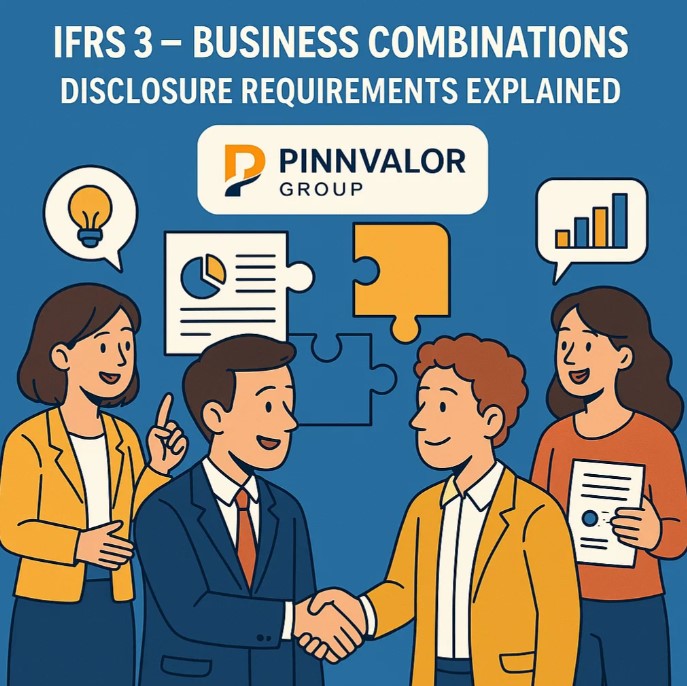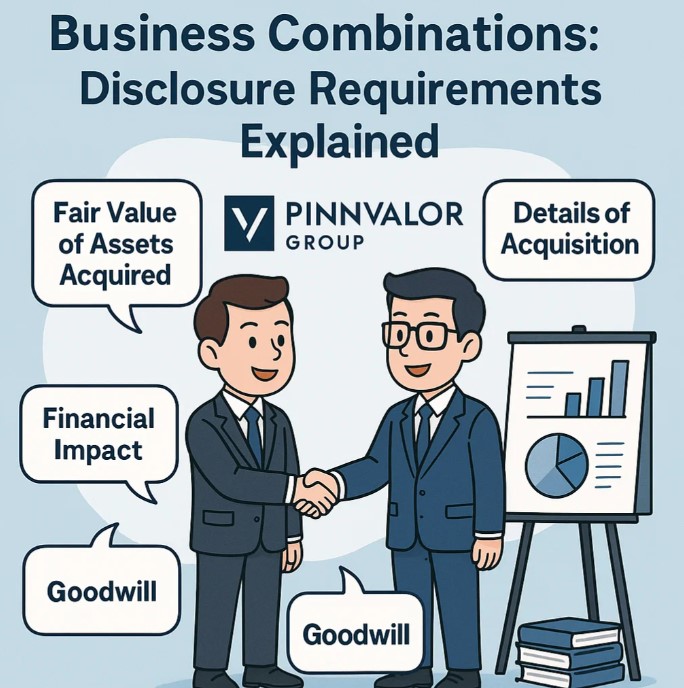
IFRS 3 – Business Combinations: Disclosure Requirements Explained
When one company acquires control over another, transparency and detailed disclosures are key to ensuring stakeholders can understand the financial and strategic implications. IFRS 3 – Business Combinations sets out comprehensive requirements for how such transactions are accounted for and what must be disclosed in financial statements. This blog explores these disclosure requirements in depth, offering clarity to preparers and users of financial reports alike.
Are your business combination disclosures telling the full story investors need to hear?
Fair value, control, and synergies—more than buzzwords, they define your acquisition. IFRS 3 helps translate them into impactful financial narratives.
🔍 What Is IFRS 3 All About?
IFRS 3 prescribes the accounting treatment for business combinations and requires that all such transactions be accounted for using the acquisition method. Beyond just recognizing assets and liabilities, the standard emphasizes comprehensive disclosure to allow users of financial statements to evaluate:
- The nature of the combination
- Financial effects of the acquisition
- Judgments and estimates made in the process
📌 Key Disclosure Requirements under IFRS 3
1. General Information about the Acquisition
- Name and description of the acquiree
- Acquisition date and the percentage of voting equity acquired
- Primary reasons for the business combination
- Description of how control was obtained
2. Consideration Transferred
- Total amount paid and breakdown by:
- Cash
- Equity instruments issued
- Contingent consideration arrangements
- Any liabilities incurred
3. Identifiable Assets and Liabilities Acquired
- Fair value of assets acquired and liabilities assumed
- Contingent liabilities recognized
- Details of significant adjustments to provisional amounts, if any
4. Goodwill or Bargain Purchase
- Amount of goodwill recognized
- Explanation of what constitutes the goodwill (e.g., synergies, workforce, etc.)
- In case of a bargain purchase, disclose the amount and reasons behind it
5. Impact on Financial Statements
- Revenue and profit or loss of the acquiree since the acquisition date
- Pro forma disclosures (optional but encouraged) showing performance as if the combination had occurred at the start of the period
6. Contingent Consideration
- Terms and conditions of any such arrangements
- Fair value measurement at acquisition date
- Subsequent changes in fair value and how they are accounted for
7. Acquisition-related Costs
- Total amount incurred
- Breakdown of where costs are recognized (typically expensed in profit or loss)
8. Non-controlling Interests (NCI)
- Method used for measuring NCI (fair value or proportionate share)
- Rationale for chosen method
9. Step Acquisitions and Previously Held Interests
- Fair value of previously held interest on the acquisition date
- Gain or loss from remeasurement, recognized in profit or loss
10. Measurement Period Adjustments
- Adjustments made within the one-year measurement period
- Reason for the change and impact on previous financials

📌 Why Are These Disclosures Important?
These disclosures not only support transparency and accountability but also provide users with the information necessary to evaluate the financial and strategic impact of a business combination. They shed light on management’s rationale, the estimated risks and returns, and potential future obligations arising from the deal.
📎 Final Thoughts
IFRS 3 ensures that business combinations are not just recorded but explained thoroughly. The detailed disclosure requirements aim to improve comparability, highlight strategic intent, and enable stakeholders to make informed decisions. While compliance can be complex, the benefit lies in promoting trust and clarity in financial reporting.
